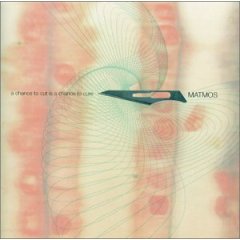A Chance to Cut Is a Chance to Cure
A Chance to Cut Is a Chance to Cure is a phrase often used within the medical community, particularly among surgeons, to express the notion that surgical intervention can provide a definitive solution to certain medical conditions. This adage underscores the importance of surgery not just as a method of treatment but as an opportunity to directly address and potentially cure ailments that other forms of treatment cannot.
Origins and Meaning[edit | edit source]
The exact origins of the phrase "A Chance to Cut Is a Chance to Cure" are difficult to pinpoint, as it has been a part of surgical lore for many years. It reflects a time-honored belief in surgery as a craft and art, where the act of making an incision (cutting) is seen as the beginning of the healing process. This saying encapsulates the optimism and confidence that surgeons often must possess to perform invasive procedures with the hope of curing their patients.
Surgical Philosophy[edit | edit source]
At its core, the phrase embodies a philosophy within surgery that values the decisive nature of surgical intervention. It highlights a fundamental aspect of surgical practice: the belief in action—specifically, the physical act of operating—as a means to resolve health issues. This philosophy acknowledges the risks associated with surgery but also emphasizes its potential to effectuate a cure where less invasive methods might fail.
Ethical Considerations[edit | edit source]
While the saying champions the efficacy of surgery, it also brings to light ethical considerations in surgical practice. The decision to operate is not taken lightly, as it involves weighing the potential benefits against the risks and complications that could arise. Surgeons must consider the patient's overall health, the likelihood of success, and the patient's quality of life post-surgery. In this context, "A Chance to Cut Is a Chance to Cure" serves as a reminder of the responsibility surgeons bear in making decisions that can profoundly affect their patients' lives.
Impact on Patient Care[edit | edit source]
The adage also reflects on the patient care aspect of surgery. It underscores the importance of informed consent, where patients are made aware of the potential risks and benefits of surgery. This dialogue between surgeon and patient is crucial in ensuring that the decision to proceed with surgery is made collaboratively, with the patient's best interests at heart.
Contemporary Relevance[edit | edit source]
In the modern medical landscape, the phrase "A Chance to Cut Is a Chance to Cure" continues to resonate, albeit with a more nuanced understanding. Advances in medical technology, minimally invasive techniques, and evidence-based practice have transformed surgical procedures, making them safer and more effective. However, the essence of the saying remains relevant, highlighting surgery's unique position in the therapeutic arsenal as a means to directly address and potentially cure diseases.
Conclusion[edit | edit source]
"A Chance to Cut Is a Chance to Cure" encapsulates a fundamental belief in the power of surgical intervention to heal. It serves as a reminder of the surgical profession's responsibilities and the ethical considerations inherent in the decision to operate. As medical science advances, the saying remains a testament to the enduring importance of surgery in patient care.
Search WikiMD
Ad.Tired of being Overweight? Try W8MD's physician weight loss program.
Semaglutide (Ozempic / Wegovy and Tirzepatide (Mounjaro / Zepbound) available.
Advertise on WikiMD
|
WikiMD's Wellness Encyclopedia |
| Let Food Be Thy Medicine Medicine Thy Food - Hippocrates |
Translate this page: - East Asian
中文,
日本,
한국어,
South Asian
हिन्दी,
தமிழ்,
తెలుగు,
Urdu,
ಕನ್ನಡ,
Southeast Asian
Indonesian,
Vietnamese,
Thai,
မြန်မာဘာသာ,
বাংলা
European
español,
Deutsch,
français,
Greek,
português do Brasil,
polski,
română,
русский,
Nederlands,
norsk,
svenska,
suomi,
Italian
Middle Eastern & African
عربى,
Turkish,
Persian,
Hebrew,
Afrikaans,
isiZulu,
Kiswahili,
Other
Bulgarian,
Hungarian,
Czech,
Swedish,
മലയാളം,
मराठी,
ਪੰਜਾਬੀ,
ગુજરાતી,
Portuguese,
Ukrainian
Medical Disclaimer: WikiMD is not a substitute for professional medical advice. The information on WikiMD is provided as an information resource only, may be incorrect, outdated or misleading, and is not to be used or relied on for any diagnostic or treatment purposes. Please consult your health care provider before making any healthcare decisions or for guidance about a specific medical condition. WikiMD expressly disclaims responsibility, and shall have no liability, for any damages, loss, injury, or liability whatsoever suffered as a result of your reliance on the information contained in this site. By visiting this site you agree to the foregoing terms and conditions, which may from time to time be changed or supplemented by WikiMD. If you do not agree to the foregoing terms and conditions, you should not enter or use this site. See full disclaimer.
Credits:Most images are courtesy of Wikimedia commons, and templates, categories Wikipedia, licensed under CC BY SA or similar.
Contributors: Prab R. Tumpati, MD

